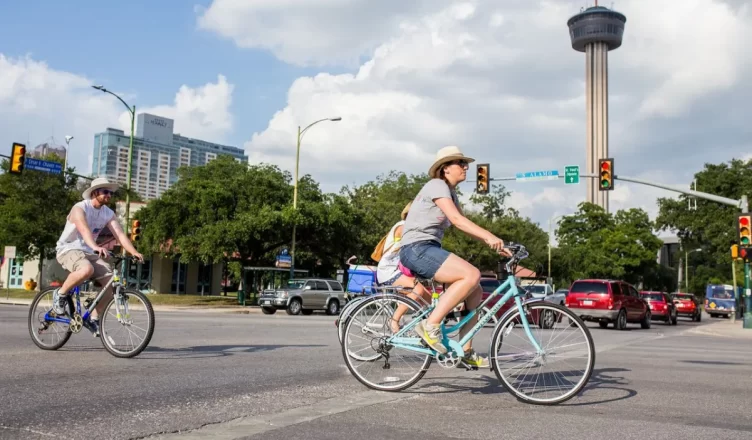Although advancements in car technology have advanced dramatically, urban mobility remains disappointingly slow. To boost urban mobility and increase urban mobility, cities must invest in infrastructure that facilitates multiple forms of transportation.
Bike lanes play an essential role in helping reduce injury rates among cyclists while making ride-sharing services simpler to use.
1. Bike Lanes
As cities strive to reduce traffic congestion, bike lanes are being implemented as an innovative solution. These dedicated spaces give cyclists a safe, convenient means of travel that reduces accidents and injuries; additionally, bike lanes offer healthy alternatives that encourage physical activity while simultaneously releasing endorphins into their bodies.
Bike lanes increase margins on roadways, providing cyclists with a clearer space to turn and avoid fixed obstacles such as curbs or signs. Furthermore, bike lanes allow bus drivers to collect riders without forcing them into traffic lanes, improving overall traffic flow.
Implementing bike lanes may provide numerous benefits, yet their implementation can be complicated and challenging. Merely painting a line doesn’t instantly transform a busy road into a dedicated space for cyclists and can raise concerns among residents and businesses who rely on traffic flow for business operations. Furthermore, the cost associated with creating and maintaining these facilities may prove prohibitive; nonetheless, even investing in bicycle lanes could make a meaningful contribution toward meeting city sustainability goals.
2. Cycle Tracks
Traditional bike infrastructure such as sharrows require cyclists to share the road with cars. Cycle tracks, which separate cyclists from traffic using physical barriers or pavement color/texture/raised curbs, provide more security and safety to riders.
At the same time, they provide for greater flexibility of bicycle turning behavior, particularly cargo bikes with larger turn radii than standard two-wheelers – this ensures safe and efficient movement for cyclists as well as vehicles.
Traffic-calming measures such as reduced speed limits and fewer stop signs can also aid cycling speeds, making merging into vehicle traffic more easily for people on bicycles – thus increasing ridership, encouraging regular trips, reducing emissions, congestion and emissions while benefiting local businesses which benefit from an influx of customers from increased bicycle ridership.
3. Cycle Racks
As we examine European cities with bike friendly infrastructure, it becomes apparent why cyclists so highly value their commutes. These cities have actively taken steps to reclaim space from cars while prioritising safety and comfort when doing so.
One way they are doing this is through the implementation of cycle racks, which come in all sorts of shapes and sizes – some resembling parking meters in design with circular rings attached to poles for secure bike parking, while other serpentine racks accommodate any size bike from kids bikes to commuter bicycles.
Cycle hubs, which serve as mini-stations offering various personal mobility options like electric bikes and scooters, are another trend worth keeping an eye on. When combined with apps that plan routes and schedules across public transit networks, such arrangements allow commuters to seamlessly multimodal journeys.
4. Bike Parking
Many cities are now reconsidering how they use urban space. Instead of placing all their emphasis on cars, these cities are creating infrastructure to support other modes of transport like walking and cycling; as a result, congestion is reduced, air quality improves, and parking spaces become green spaces or community amenities – all contributing to making life in these cities more pleasant.
Cars crowd roads, emit greenhouse gases and other pollutants during operations and manufacture, and cause hundreds of fatal and near-fatal accidents annually in the US. By contrast, bikes require much less road space to operate, have much fewer emissions, don’t create noise pollution, and can be enjoyed by people of all ages and fitness levels.
Paris had long planned to become 100 percent cyclable; during this pandemic they intensified their efforts by building temporary lanes and banning cars from certain streets – leading to bicycle trips growing by 60% year over year.

